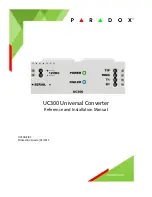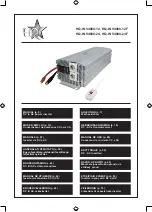
©
2010 Magnum Energy, Inc
.
22
3. Prior to turning on the inverter, make sure all connected loads (e.g.,
appliances) are switched OFF or disconnected from the AC outlets.
4. a. If a remote switch is connected, press the ON/OFF switch to
turn the inverter on.
b. If there is not a remote switch connected, lightly press and
release the inverter’s ON/OFF power switch — located on the top of
the inverter — to turn the inverter on.
Verify the inverter’s status indicator is blinking – indicating the in-
verter is providing AC power.
5. Check the output voltage of the inverter by connecting a true
RMS multimeter to the outlets powered by the inverter. Verify the
voltage is 120 VAC +/- 5 VAC. If not using a true RMS meter the
output AC voltage could indicate from 90 to 130 VAC, depending on
the battery voltage.
6. Turn on or connect a load to the outlets and verify it comes on.
Continue to keep the load connected and turned on.
7. Press the remote ON/OFF switch to turn the inverter off. If the
remote is not used, press and release the inverter’s ON/OFF power
switch to turn the inverter off. The inverter’s status indicator and the
connected load should go off.
8. Apply AC power to the inverter’s AC input. After the AC input power
is quali
fi
ed (approximately 15 seconds), the incoming AC power will
transfer through the inverter to the inverter’s AC output and power
the connected load. Verify the inverter’s status indicator and the
connected load comes on.
9. Even though the connected load is on, the inverter is currently
disabled/off. Press the remote’s ON/OFF switch (or press and re-
lease the ON/OFF power switch on the inverter) to enable/turn on
the inverter.
10. Disconnect the incoming AC power to the inverter. Verify the con-
nected load remains on, but now is powered by the inverter.
If the inverter passes all the steps, the inverter is ready for use.
If the inverter fails any of the steps, refer to the Troubleshooting
section.
2.0 Installation
















































